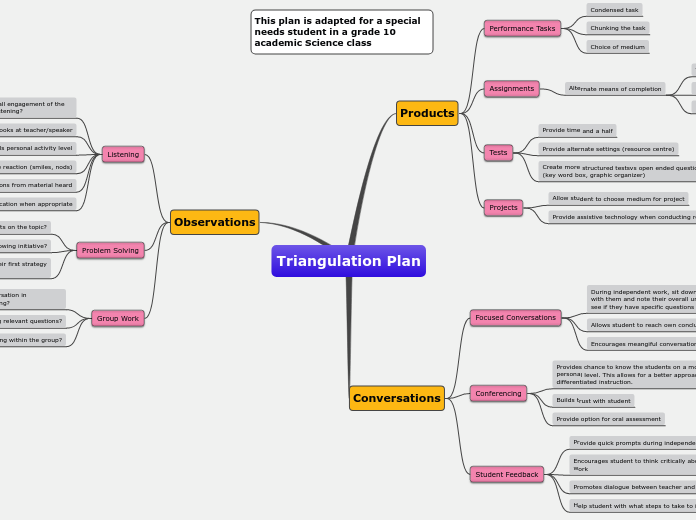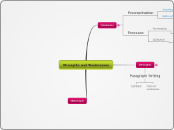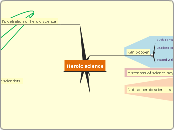How will these assessments meet their needs?
Incorporating short daily and or weekly conversation with this student allows me to get a better sense of where their learning is at. This student cannot always articulate ideas and thoughts on paper, however their strength lies in being able to verbally explain their learning process. Being able to observe learning through a different lense (not just formal written assessments) creates more opportunity for student success. As an older secondary student, these conversations and feedback are alternate ways for them to gain a deeper understandng of how they learn best, and what what their areas of strength are.
How will these assessments meet their needs?
This students IEP states that they are entitled to extra time on tests and alternate settings. Providing this student with the modifications and accomodations they need will better set them up for success in the course. This student is better able to access the course material with the changes to the assessment and evaluation process. However, these changes do not alter the curriculum expecatations at all. Providing different means to submit assignments allows for creative freedom and encourages this student to play to their strengths.
How will these observations meet their needs?
These informal assessments are ways for me to check for learning and understanding even if the student is uncomfortable or shy when speaking or answering questions in front of the class. These observations also provide the chance for me to observe how the student interacts within a small group of students. Additionally, this student can often express ideas and thoughts within a group but not necessarily relay this information on formal written assessments or tests.
This plan is adapted for a special needs student in a grade 10 academic Science class
Triangulation Plan
Type in the name of the novel and movie you are going to compare and contrast.
Example: Great Expectations.
Observations
The introduction provides background information for both the book and the movie.
Group Work
Create a thesis statement in which you briefly compare and contrast the book and the movie.
How are they interacting within the group?
Are they asking relevant questions?
Are they contributing to group conversation in meaningful ways that supports learning?
Problem Solving
Shows resilience( after their first strategy
does not work).
Are they showing initiative?
Are they able to articulate their thoughts on the topic?
Type in the name of the main character.
This has to be the same for both the book and the movie.
Listening
Asks for clarification when appropriate
Draws reasonable conclusions from material heard
Demonstrates responsive reaction (smiles, nods)
Controls personal activity level
Looks at teacher/speaker
The teacher will observe the overall engagement of the student. Is the student actively listening?
Conversations
Restate your thesis while avoiding repetition.
Student Feedback
Restate the differences between the book and the movie.
Help student with what steps to take to improve
Promotes dialogue between teacher and student
Encourages student to think critically about their own work
Provide quick prompts during independent work
Conferencing
Restate the similarities between the novel and the movie, but try to avoid repetition (this will help if you write an essay afterward).
Provide option for oral assessment
Builds trust with student
Provides chance to know the students on a more personal level. This allows for a better approach to differentiated instruction.
Focused Conversations
Encourages meangiful conversation and learning
Allows student to reach own conclusions
During independent work, sit down one-on-one
with them and note their overall understanding. Check to see if they have specific questions
Products
Use point-by-point organization in the body section to present the characteristics briefly stated in the thesis.
This means that if you use this draft to write a compare and contrast paper, each characteristic will be introduced in a separate paragraph.
Projects
Provide assistive technology when conducting research
Allow student to choose medium for project
Tests
Create more structured testsvs open ended questions (key word box, graphic organizer)
Provide alternate settings (resource centre)
Provide time and a half
How is the novel different from the movie?
Type in the answer. Use 'like', 'same as' or 'similar' for comparison, and 'unlike', 'differ from' and 'although' for contrasting.
Assignments
Alternate means of completion
Provide poster/visual board option
Point form vs paragraph
Typed up vs hand written (saves time)
Performance Tasks
Choice of medium
Chunking the task
Condensed task
How is the movie different from the novel?
Type in a short explanation. Use 'like', 'same as' or 'similar' for comparison, and 'unlike', 'differ from' and 'although' for contrasting.









